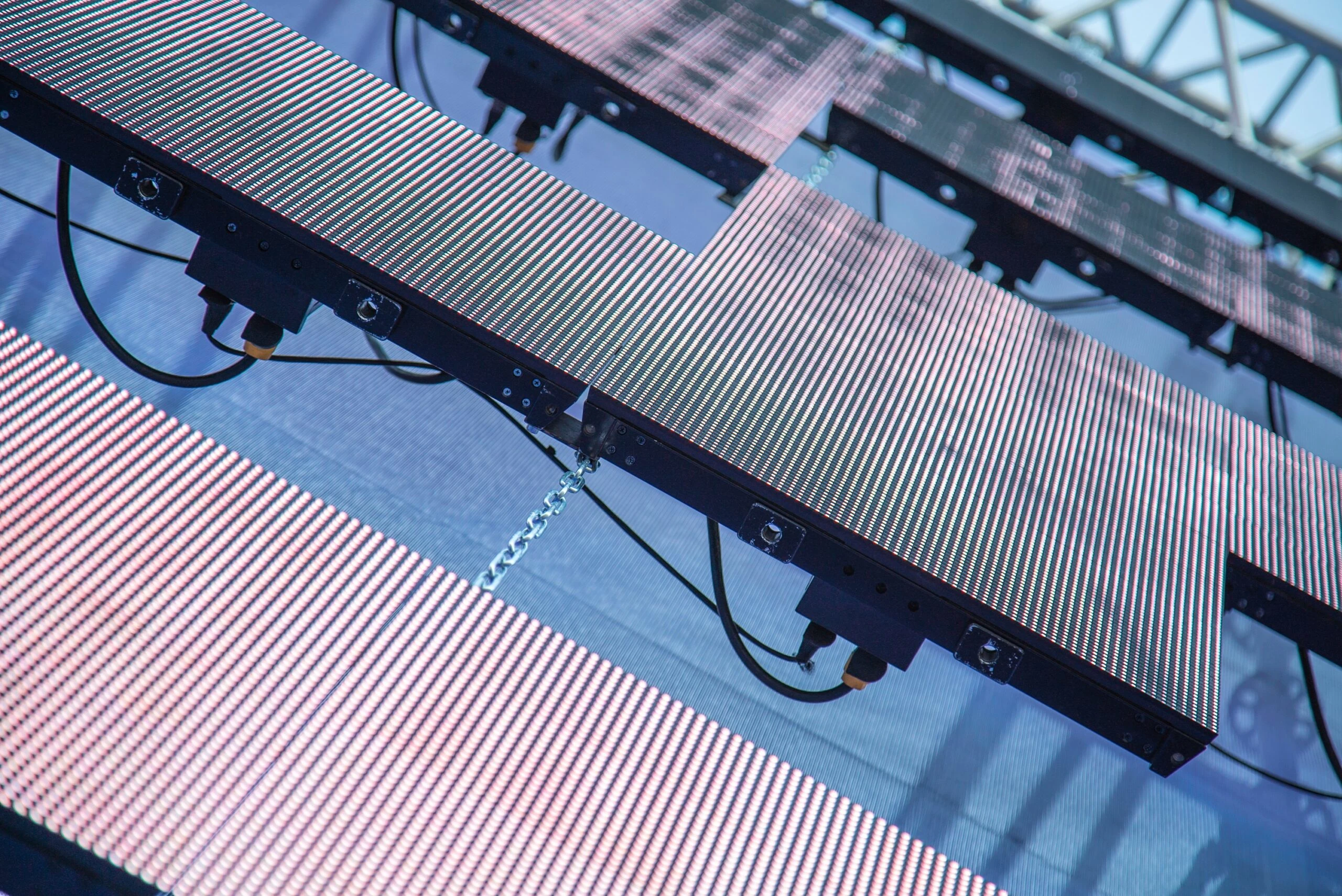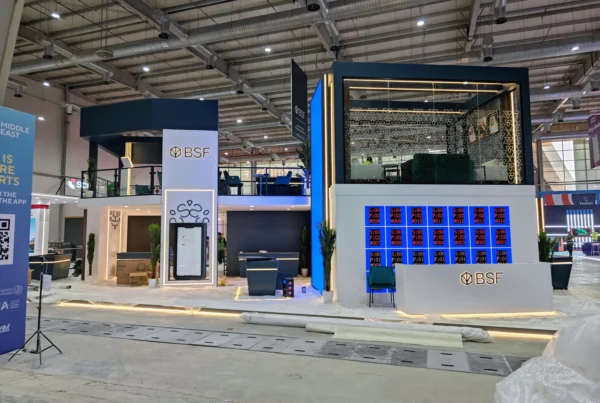Delivering a digital interactive experience has become a top priority in both events and real estate, where customer engagement, immersive technology, and ROI must coexist in a balanced manner. By 2025, real-time 3D modeling, AI-driven personalization, and cutting-edge displays will only grow in significance—but how can you adopt these solutions without overshooting your budget? This in-depth guide explores the cost drivers, strategic planning techniques, and tangible case examples to help organizations of all sizes leverage immersive tools effectively, ensuring you get maximum returns on your investment.
1. Why a Digital Interactive Experience Matters for 2025
1.1 Evolving Consumer Expectations
Customers are no longer satisfied with passive visuals—be it a single booth at a conference or a basic online property listing. They want experiences that adapt to their interests, allow for real-time customization, and deliver a sense of control. These developments are reflected in the PCMA Report on Event Technology ROI, which underscores how event tech investments drive deeper engagement and boost attendee satisfaction.
1.2 The Role of Immersive Tech in Events and Real Estate
- Events: From virtual conferences to augmented-reality product demos, immersive solutions enhance brand presence and keep audiences engaged longer.
- Real Estate: As highlighted by The Rise of Digital Twin in Real Estate: From Concept to Industry Standard, digital twins and interactive showrooms help stakeholders visualize and explore properties before they’re built.
1.3 Key Factors Shaping 2025
- AI Integration: Platforms like Nvidia’s GPU-based systems (NVIDIA on AI and Immersive Solutions) allow real-time user data processing, fueling adaptive environments and data-driven experiences.
- Metaverse Growth: Per the McKinsey Report: The Metaverse and Immersive Technologies, new immersive environments expand the scope of brand interactions.
- Digital Twins as Mainstream: MarketsandMarkets: Digital Twin Growth Forecast projects the digital twin market to hit $73.5 billion by 2027, driven partly by real estate’s eagerness for high-fidelity visualization.
By recognizing these shifts now, planners and developers can position their organizations to embrace immersive tech without scrambling for resources or know-how at the last minute.
2. Identifying Cost Drivers & Setting Realistic Goals
2.1 Typical Expenses to Consider
- Hardware & Equipment: High-resolution screens, projection systems, AR/VR devices, and robust servers. For example, a major trade show might require multiple high-end displays and interactive kiosks, whereas a smaller real estate office may only need a single VR station.
- Software & Content Creation: Developing real-time 3D environments or complex digital twins, particularly when leveraging top-tier engines like Unreal Engine (as seen in The Future of Immersive Event Technology: How Unreal Engine Shapes Tomorrow’s Digital Twin Real Estate Experiences).
- Integration & Infrastructure: Linking interactive technology to existing AV setups or CRM tools. Complex real estate digital twins might need back-end data layers for occupancy or environmental analytics.
- Staffing & Support: Skilled technicians, designers, or AI specialists ensure the experience runs smoothly. Costs range from in-house teams to external vendor partnerships.
- Venue & Logistics: Large-scale events require additional internet bandwidth, lighting, or specialized staging, whereas smaller real estate studios might only invest in modest facility upgrades.
2.2 Defining Objectives for High-Impact ROI
- Enhance Brand Presence: Are you aiming for memorable brand engagement at a conference or expo?
- Boost Sales & Conversions: Off-plan property sales, e-commerce upsells, or lead generation at events.
- Streamline Collaboration: Hybrid events or digital twins that unify stakeholders in real-time design reviews.
By clarifying goals, you can target specific technologies (e.g., AR or AI chatbots) instead of overspending on less relevant features.
3. Budgeting Strategies for Different Scales
3.1 Small-Scale Deployments
Characteristics: Minimal infrastructure, simpler interactive elements, lower staff overhead.
- Tactics:
- Rent VR headsets or AR devices for trial events.
- Rely on off-the-shelf interactive apps or templates.
- Use smaller partial digital twins to demonstrate key property features, thereby testing market interest.
- Result: Acquire user feedback without significant capital outlay. Then scale up if ROI data is favorable.
3.2 Mid-Range Solutions
Characteristics: Medium-sized event footprints, partial real estate digital twin expansions, or multi-room brand experiences.
- Tactics:
- Develop custom content modules in collaboration with specialized vendors.
- Adopt subscription-based software or cloud-rendering options for real-time 3D, balancing performance needs with hardware limitations.
- Incorporate data analytics for measuring attendee engagement or buyer interactions.
- Result: Achieve a robust digital interactive experience while staying within a moderate budget. Scalability remains feasible if proven successful.
3.3 High-End Immersive Platforms
Characteristics: Large-scale, highly interactive, or entire city/district-level digital twins (e.g., Riyadh Digital Twin: A New Dimension in Urban Visualization).
- Tactics:
- Invest in powerful servers, advanced AI solutions, or custom VR/AR setups.
- Link various data sources (IoT sensors, occupant analytics, e-commerce back-end) into one integrated environment.
- Leverage high-fidelity visuals with cinematic lighting, multiple user concurrency support, and real-time modifications.
- Result: A premium, jaw-dropping experience suitable for globally significant events or major real estate developments catering to international investors.
For more insight on controlling costs at each scale, refer to EventMB Report on Budgeting for Event Tech.

4. Choosing the Right Tech & Partners
4.1 Evaluating Engines & Tools
- Unreal Engine vs. Unity: Unreal typically excels in photorealistic quality crucial for real estate showrooms, while Unity may be more suitable for simpler interactive events.
- AI & Cloud Solutions: Depending on concurrency and performance demands, consider solutions from NVIDIA on AI and Immersive Solutions, offering GPU-accelerated rendering and on-the-fly analytics.
4.2 Vendor Selection
- Transparency in Costs: Request itemized quotes to track each cost driver clearly.
- Flexible Contracts: Ensure vendors can adapt to your changing requirements—one or two expansions might appear mid-project.
- Credentials & Reviews: Look for references, community feedback, or case studies demonstrating success in similar contexts.
4.3 In-House vs. Outsourced Approaches
- In-House: Retain control but risk skill gaps or steep learning curves.
- Outsourced: Tap specialized expertise with immediate effect, though monthly or project-based fees might be higher.
- Hybrid: Many prefer a partnership approach, letting staff handle day-to-day tasks while external teams manage complex developments.
5. Key ROI Metrics & Data-Driven Approaches
5.1 Measuring Engagement & Impact
According to the PCMA Report on Event Technology ROI, engagement metrics such as dwell time, session attendance, and attendee satisfaction scores are prime indicators of success. Similarly, for real estate:
- Pre-Sales Speed: Reduced selling cycle for off-plan apartments or commercial spaces.
- Lead Quality: The ratio of engaged users who become serious prospects or buyers.
5.2 Quantifying Intangible Benefits
- Brand Uplift: Surveys measuring brand recall or sentiment can gauge post-event or post-showroom resonance.
- Operational Efficiency: Real estate digital twins may streamline project approvals or cut rework rates, saving time and labor.
5.3 Analytics & Continuous Improvement
Event or showroom analytics reveal real-time user navigation patterns—helpful for refining layouts or marketing strategies. By adjusting quickly, you can maintain a strong ROI and keep experiences fresh.
6. Scalability & Future-Proofing
6.1 Modular Design
Build your immersive solutions in modules—like separate VR “rooms,” multiple AR stations, or partial digital twins—and add components as budgets allow or user feedback warrants. This modular approach ensures you don’t overspend early on unproven features.
6.2 Cloud & Edge Computing
For larger events or complex real estate models, adopt flexible infrastructures. Cloud rendering, for instance, offloads heavy graphics tasks, while edge computing can reduce latency at large venues.
6.3 Interoperability & Open Standards
Supporting common file types and integration protocols fosters easier expansions and vendor-switching if needed. This is especially relevant in massive digital twin projects, as recommended by the Deloitte Insights: Digital Twin ROI in Real Estate.
7. Case Studies & Examples
7.1 Small Event Activation: Saudi Cup 2023
For an example of a cost-effective interactive event, see the Saudi Cup 2023: Equestrian Authority Activations. They introduced targeted AR/VR stations that delivered strong brand engagement without ballooning budgets. The pilot approach validated user interest, spurring potential expansions later.
7.2 Mid-Scale Digital Twin: Jeddah Central Development
The Jeddah Central Development Company Digital Twin Project exemplifies a moderate real estate venture employing partial digital twin technology for interactive tours. Stakeholders explore essential project elements, helping secure investor buy-in and occupant interest before final build-outs.
7.3 Large Urban Visualization: Riyadh Digital Twin
For a high-end approach, the Riyadh Digital Twin: A New Dimension in Urban Visualization integrates advanced 3D modeling and real-time updates for city-scale planning. While requiring substantial investment, the outcome fosters robust decision-making among government entities, developers, and international investors.
8. Addressing Challenges & Best Practices
8.1 Data Privacy & Security
Large-scale immersive setups often capture personal data (e.g., user movements, building occupant metrics). Comply with regulations like GDPR or local data protection laws, anonymize sensitive data, and implement encryption measures.
8.2 Skills & Training
A common hurdle is finding specialized talents—like real-time engine devs or data scientists. When in-house expertise is scarce, external partners or partial outsourcing can expedite results.
8.3 Maintaining Usability & Clarity
Too many complex features can overwhelm users, especially first-timers at events or buyers unaccustomed to VR. Gradual onboarding, step-by-step instructions, or user-friendly interfaces keep the focus on the key narrative and brand message.
9. Conclusion & Actionable Steps
As 2025 approaches, the digital interactive experience is increasingly vital for events seeking memorable brand impact and for real estate aiming to expedite sales or refine planning. By pinpointing cost drivers, setting precise objectives, and choosing technologies strategically, even smaller organizations can access immersive tools once reserved for big budgets. Initiatives like pilot programs, modular expansions, and robust ROI tracking help ensure you balance excitement with fiscal responsibility.
- Start with Clear Goals: Identify what metrics truly matter—be it faster property sales, deeper attendee engagement, or brand impressions.
- Adopt a Phased Approach: Implement a partial digital twin or a single AR booth first, gauge results, then scale.
- Monitor ROI & Evolve: Use metrics like dwell time, lead generation, or user satisfaction to refine your approach.
- Stay Informed & Flexible: Emerging technologies (AI, edge computing, etc.) can reduce costs or enhance experiences when integrated early.
Looking to integrate interactive technology into your roadmap? Explore our resources on Planning Your Budget: How to Invest Wisely in Immersive Event Technology Solutions or contact us directly at Chameleon Interactive for personalized guidance. Whether you’re building an immersive event campaign or forging a digital twin for real estate, well-planned budgeting and scaling strategies let you captivate audiences without straining your financial limits.
FAQ: Implementing a Digital Interactive Experience
1. What are the main cost drivers for creating a digital interactive experience on a limited budget?
Typical expenses include hardware (e.g., VR headsets, high-resolution screens), custom software or content creation, on-site technical support, and venue logistics. Understanding which features truly serve your goals—whether showcasing a partial digital twin or running a single AR demo—helps minimize unnecessary spending.
2. How can smaller organizations or teams effectively adopt immersive solutions without overshooting costs?
Start with modest pilot projects, such as one virtual kiosk or a compact digital twin for a single building section. Measure the results—user engagement, leads, or pre-sales—and use that data to justify incremental expansions. Short-term rentals or subscription-based services also allow you to test feasibility before major investments.
3. What factors should I consider when choosing the right immersive technology partner?
Ask for itemized quotes, evaluate the vendor’s track record in your industry (events, real estate, etc.), and ensure they offer flexible pricing models or post-project support. Checking community reviews, references, and use of recognized platforms like Unreal Engine often indicates a reliable and scalable approach.
4. How do I measure ROI for immersive event technology or a real estate digital twin?
Define metrics aligned with your main objectives—such as shorter off-plan sales cycles, improved attendee engagement scores, or increased brand recall. Gathering data on dwell time, user interactions, or conversion rates helps you refine your strategy, proving the value of immersive investments.
5. Can I repurpose my digital assets across multiple events or real estate projects?
Absolutely. Adopting a modular design or cloud-based rendering can facilitate reusing 3D models, AI routines, or interactive elements for various conferences or property developments. This boosts cost efficiency over the long term and ensures consistent brand experiences for audiences and buyers alike.


